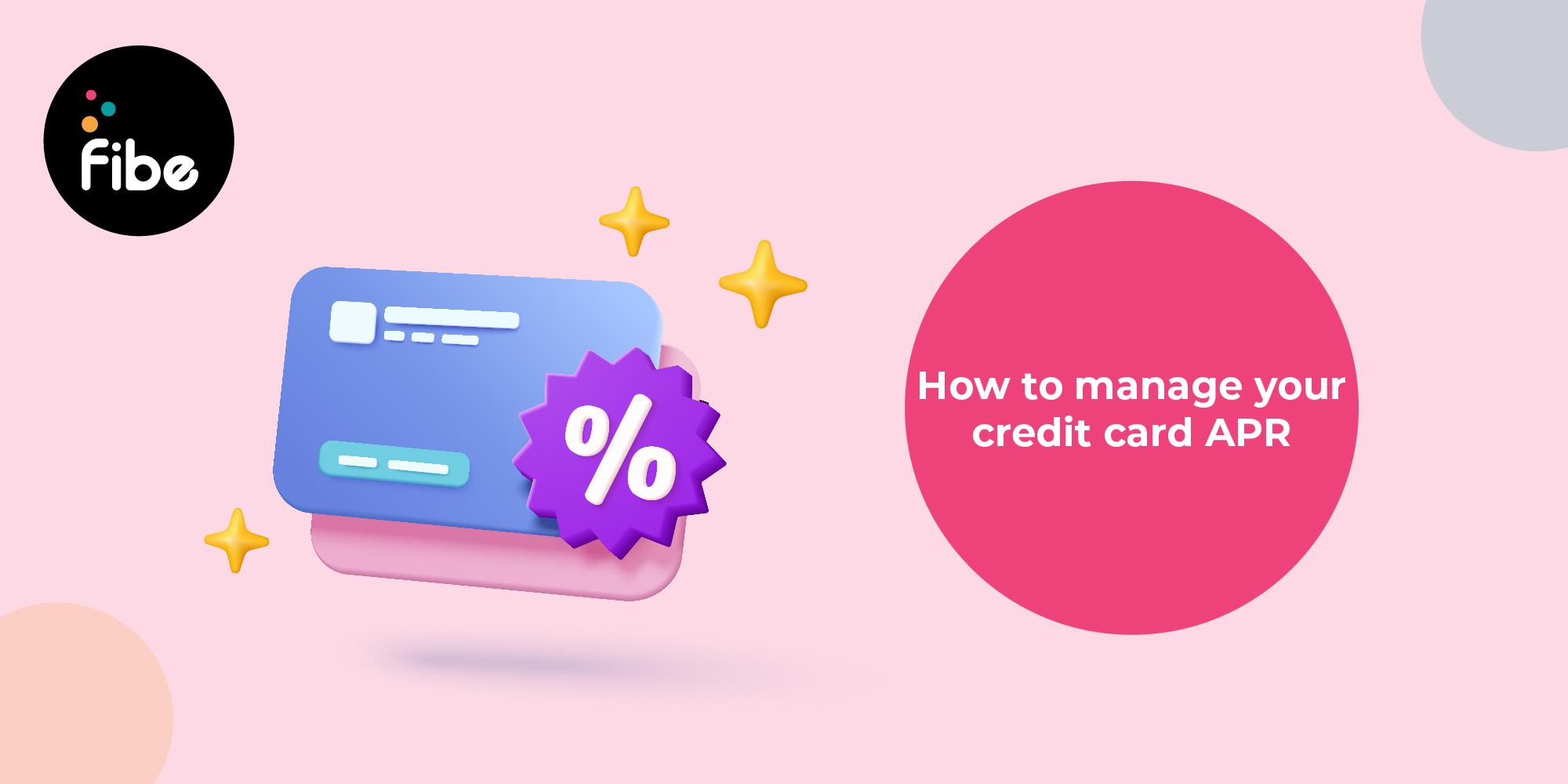- Home
- Blogs
- Credit Card
- Manage Credit Card Apr
What is Apr? Types of Credit Card Apr & How It’s Calculated
Reviewed by: Fibe Research Team
- Updated on: 5 Dec 2024
- Published on: 9 Nov 2023
Reviewed by: Fibe Research Team

Credit cards are a powerful financial tool. Understanding APR can help you to manage and use your credit card more responsibly. To learn about what is the annual percentage rate for credit cards, read on.
What is Credit Card APR?
While some credit cards are cheaper to maintain, some are more expensive. How to make out the difference between the two? Just check the APR! If you don’t pay your monthly bills, an outstanding balance starts to accumulate. Now, the annual percentage rate means the interest you pay on your outstanding balance at the end of each billing cycle along with other annual charges. Check your chosen card’s APR beforehand to understand the cost of using your card.
Types of Credit Card APR
Now that you have understood what APR is in credit cards, learn about the different types of APR that issuers charge.
Introductory APR
This is a particular sort of interest rate that only applies for the first three to six months. It is meant to attract you, but you should be aware that such low rates do not last forever. In most cases, 0% introductory APR is applicable only for balance transfers for the first few months.
As its name suggests, the purchase APR on a credit card applies when you purchase a product or use a service. Under this type of APR, the charges you have to pay as interest depends on your spending.
Some cards allow you to withdraw cash from an ATM, for which they charge you a transaction fee and interest rate. Hence, the cash advance APR refers to the interest rate applicable to such transactions. Note that a cash advance APR is generally higher than a purchase APR.
Issuers also charge a penalty APR when you miss a payment or default on your dues. You must avoid this APR as it is high and negatively impacts your credit score.
A balance transfer APR applies when you transfer the outstanding balance from one credit card to another. This type of APR is generally lower than the purchase APR applicable on the first card.
Having a lower APR rate on credit cards significantly reduces the interest due on unpaid balances and your maintenance fees, too. It helps you manage your finances more effectively. Follow these tips to get a lower APR on your credit card.
A higher score positions you as a low-risk borrower. Hence, you may get a lower APR on credit cards from issuers when you have a high credit score.
As a loyal and responsible customer, you can reach out and negotiate for a lower APR. Banks are usually willing to lower the rates to keep you on as a customer.
How to Pay Less APR on Your Card
Failing to make timely bill payments or defaulting on your credit card dues means that a penalty APR kicks in. This is much higher than other types of APRs. Thus, pay your credit card bill in full to avoid high-interest charges.
Decreasing your outstanding balance also helps in reducing the APR. Hence, ensure you pay more than the minimum balance in each billing cycle.
A credit card offers quick and easy access to funds. This is why it remains an attractive financial product. However, APR on credit cards can be as high as 50% p.a. So, plan your expenses and avoid any outstanding balance so the APR doesn’t apply.
To maximise your benefits, apply for the Fibe Axis Bank Credit Card. From cashback to discounts on dining, this numberless credit card offers many benefits and links to your UPI ID for greater safety. To get it now, apply on the Fibe App or register on our website.
There are various strategies you can employ to lower your credit card APR. For instance, you can reduce your existing debt by making timely repayments to improve your credit score. You can negotiate for a lower APR with the credit card issuer based on a higher credit score.
No, you can’t adjust the APR on credit cards. However, you can negotiate with the issuer for a reduced APR.
A good annual percentage rate means when the rates are in the low teens or below on a credit card.
If your credit card APR is high, you can opt for another credit card allowing a balance transfer with a lower APR. In this way, you can save significantly on the dues applicable to your outstanding balance.